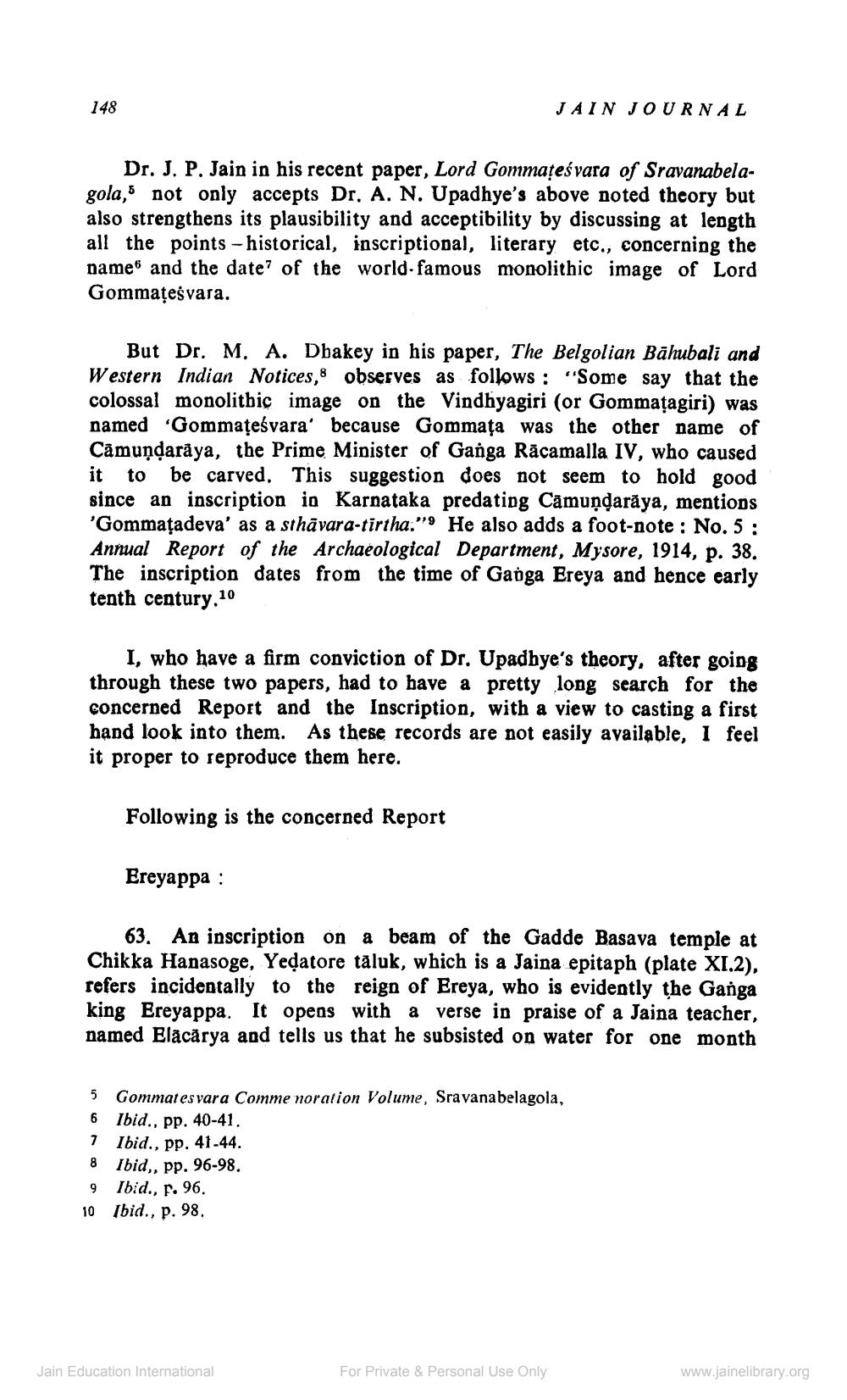________________
148
JAIN JOURNAL
Dr. J. P. Jain in his recent paper, Lord Gommateśvara of Sravanabelagola,5 not only accepts Dr. A. N. Upadhye's above noted theory but also strengthens its plausibility and acceptibility by discussing at length all the points - historical, inscriptional, literary etc., concerning the name and the date of the world-famous monolithic image of Lord Gommatesvara.
But Dr. M. A. Dbakey in his paper, The Belgolian Bāhubali and Western Indian Notices, 8 observes as follows: "Some say that the colossal monolitbiç image on the Vindhyagiri (or Gommațagiri) was named 'Gommateśvara' because Gommata was the other name of Câmundaraya, the Prime Minister of Ganga Rācamalla IV, who caused it to be carved. This suggestion does not seem to hold good since an inscription in Karnataka predating Cảmundarāya, mentions 'Gommaţadeva' as a sthāvara-tirtha."9 He also adds a foot-note : No. 5 : Annual Report of the Archaeological Department, Mysore, 1914, p. 38. The inscription dates from the time of Ganga Ereya and hence early tenth century.10
I, who have a firm conviction of Dr. Upadhye's theory, after going through these two papers, had to have a pretty long search for the concerned Report and the Inscription, with a view to casting a first hand look into them. As these records are not easily available, I feel it proper to reproduce them here.
Following is the concerned Report
Ereyappa :
63. An inscription on a beam of the Gadde Basava temple at Chikka Hanasoge, Yedatore taluk, which is a Jaina epitaph (plate XI.2), refers incidentally to the reign of Ereya, who is evidently the Ganga king Ereyappa. It opens with a verse in praise of a Jaina teacher, named Blacărya and tells us that he subsisted on water for one month
5 Gommat es vara Comme noration Volume, Sravanabelagola, 6 Ibid., pp. 40-41. 1 Ibid., pp. 41-44. 8 Ibid,, pp. 96-98. 9 Ibid., p. 96. 10 Ibid., p. 98.
Jain Education International
For Private & Personal Use Only
www.jainelibrary.org




